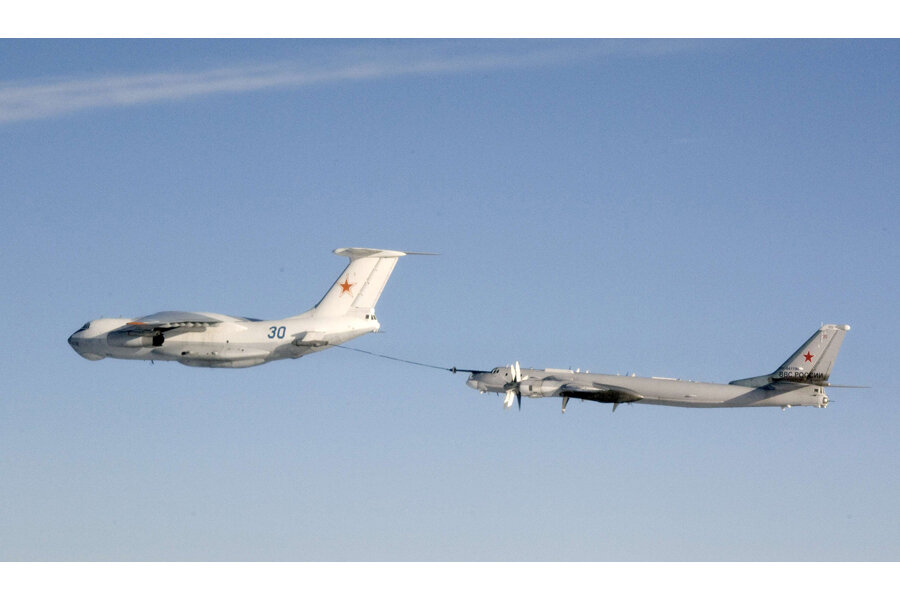Russia's flights over Europe: How much bark, how much bite?
Loading...
| Moscow
Large numbers of Russian warplanes scarcely seen in European airspace since the cold war's end are suddenly setting off alarms all along Black Sea and Atlantic coasts, NATO alleged Wednesday. NATO says the planes performed extended maneuvers that often involve several aircraft and skirt close to national boundaries.
The flights may send a clear political message from the Kremlin – Russian analysts say they are a response to heightened NATO activity around Russia – but the threat they pose appears minor, experts say.
The multiple sightings of huge 1950's vintage Tu-95 "Bear" strategic bombers, often accompanied by fighters and tanker planes, lumbering down Europe's coast in their old Soviet-era patrol routes has triggered worries that Russia may be taking a more aggressive military posture as East-West relations deteriorate over the crisis in Ukraine.
In all, NATO said it had intercepted 19 Russian planes on Wednesday alone, flying in formations far beyond their usual turf. So far this year, NATO air forces have scrambled fighter planes to meet about 100 Russian intruders, three times more than in all of 2013.
"These sizable Russian flights represent an unusual level of air activity over European airspace," NATO said in a statement.
Russian military analysts argue that NATO's complaints are "ritual hypocrisy" from an alliance that scarcely reduced its own surveillance and military maneuvers around Russia's borders after the USSR collapsed and, amid growing tensions over Ukraine, has begun to deploy nuclear-capable F-16 fighters near Russia's borders in Poland and the Baltic states.
"We have to react to that. It's NATO that's coming closer to us, not the other way around," says Viktor Litovkin, military editor for the official Tass agency in Moscow. "Contrary to what the Western media seems to be implying, we are not violating any rules or entering anyone's territory. We are flying in international airspace, outside the corridors used by civilian aircraft, and observing all the normal laws and international agreements."
An aging force
Few experts believe that Russia can keep up this pace of wide-ranging military patrols, which saw one squadron of tankers and Tu-95 bombers – roughly the same size and age of the US B-52 – fly the full length of Europe's coastline, from Norway to Portugal, prompting NATO jets to scramble all along the way.
Russia's aging force of about 50 Tu-95s, supplemented by about a dozen more modern supersonic Tu-160 "Blackjack" bombers, is not regarded as very threatening. The Russians have had a hard time keeping any significant number of them in the air over the past two decades.
But that may change in coming years, says Viktor Baranets, a former Russian defense ministry spokesman and now security columnist with the Moscow daily Komsomolskaya Pravda.
He says the current spike in flights may be an immediate political message due to the Ukraine crisis, but the decision to return to Soviet-era standards of training and patrolling was taken by President Vladimir Putin a year ago.
"In the 1990s we were so poor that our guys almost never got to fly, and when they did they spent most of their time praying they'd make it home" in those badly maintained aircraft, he says. "Now, according to Putin's decision, we're going to have three thousand military exercises a year, constant training, and all new equipment. So, these intensive patrols will probably become the norm. You'd better get used to it."






